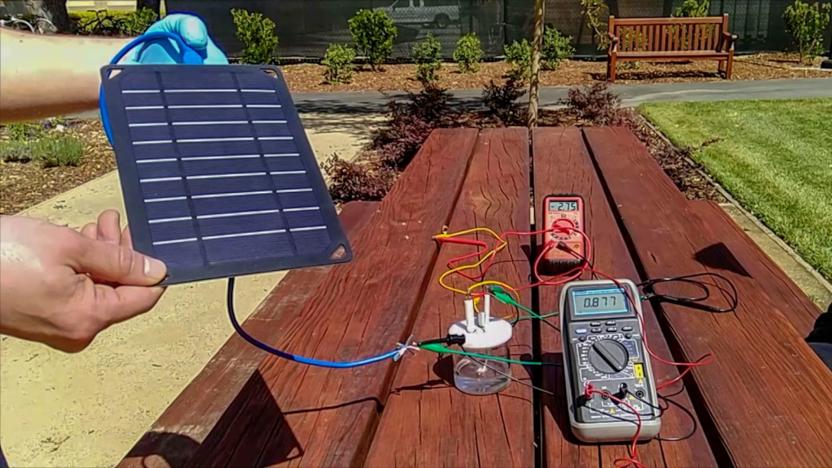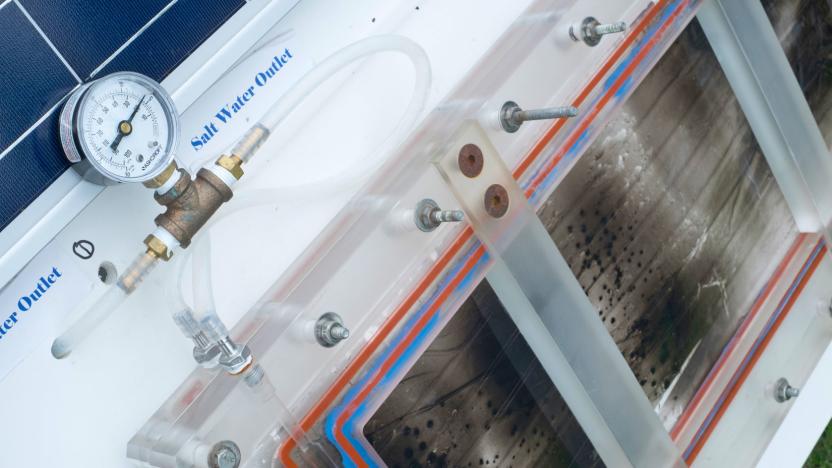seawater
Latest

IBM’s cobalt-free EV battery uses materials extracted from seawater
Electric vehicles will play an important role in reducing greenhouse gas emissions, but they are not yet a perfect solution. Today, most EVs run on lithium-ion batteries made with heavy metals like cobalt, of which there is a limited supply and less than ideal mining conditions. The IBM Research Battery Lab may have a solution: a new battery built without heavy metals. It's made, instead, with materials that can be extracted from seawater.

Scientists can turn regular seawater into hydrogen fuel
A team of scientists at Stanford have figured out a way to make hydrogen fuel out of saltwater. The discovery could open up the world's oceans as a potential source of energy. Researchers view electrolysis, or the act of splitting water into hydrogen and gas, as a promising new source of renewable energy. But it comes with many roadblocks; a major one being that only purified water can be used in electrolysis. Seawater tends to corrode water-splitting systems.

Researchers can now desalinate seawater with the power of the Sun
One of the oldest means of extracting potable liquid from seawater involves distillation, basically boiling the water into steam and then cooling the purified vapor in condensation tubes. Problem is, this method is incredibly power intensive with nearly half of the input energy going towards just boiling the water. But, a team of researchers from Rice University have developed a new technique that not only drastically reduces the amount of energy needed but can decouple the process from the power grid altogether.

ICYMI: Hydroponics on a grand scale
try{document.getElementById("aol-cms-player-1").style.display="none";}catch(e){}Today on In Case You Missed It: Sundrop Farms in Australia produces tomatoes from using solar power and seawater, no soil, pesticides or groundwater involved. You can watch the video of the facility here or the CNN story here. The story about the weather study using man-made ice storms is described here. If you're interested in the bird-inspired drone design, that's here, and the meat pie into the stratosphere is here. As always, please share any interesting tech or science videos you find by using the #ICYMI hashtag on Twitter for @mskerryd.

ICYMI: Real-time drawing collaboration and sippable seawater
try{document.getElementById("aol-cms-player-1").style.display="none";}catch(e){}Today on In Case You Missed It: Google introduced a new cloud-connected whiteboard called the Jamboard, which is made for collaboration with coworkers, then the finished doodle can be stored in Google Drive. Meanwhile the SAROS is a wave-powered desalination system that can produce 3,500 gallons a water a day of potable water from seawater, up on Kickstarter with the aim of helping coastal communities get better access to drinking water. Finally anyone prepping for Halloween will have carving envy from this video. The Pizza Hut video is here. As always, please share any interesting tech or science videos you find by using the #ICYMI hashtag on Twitter for @mskerryd.



